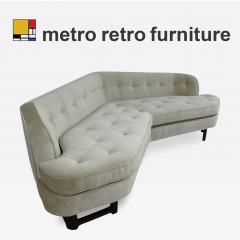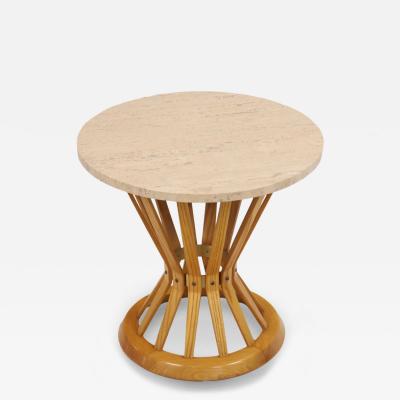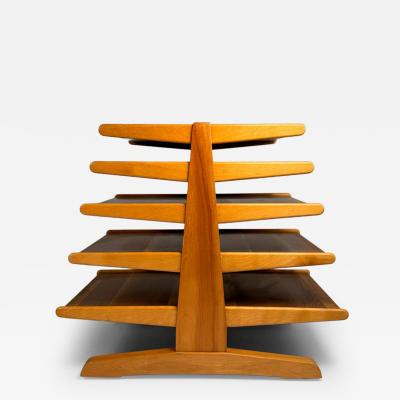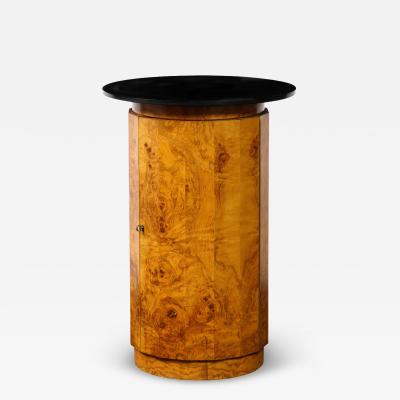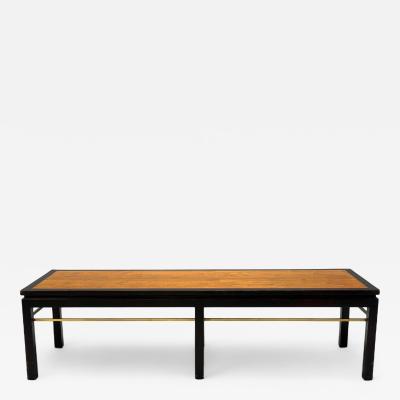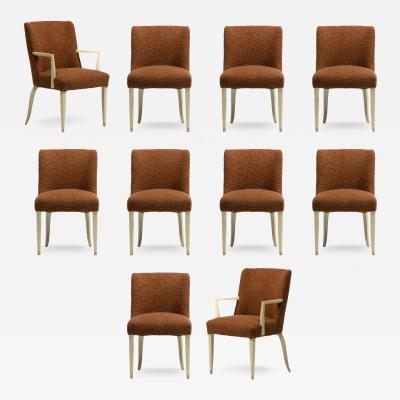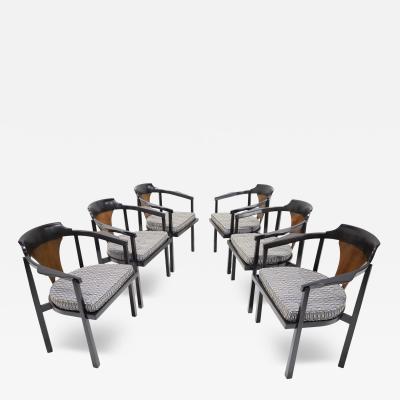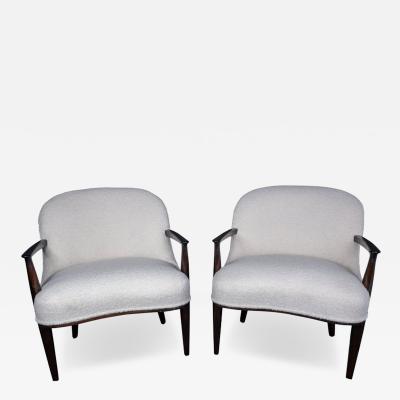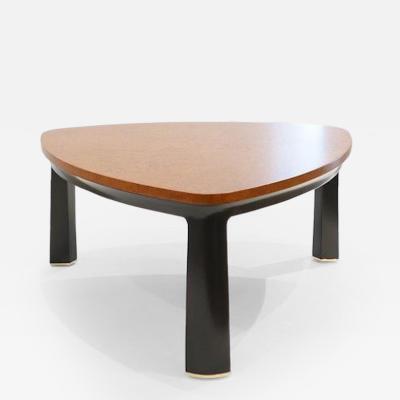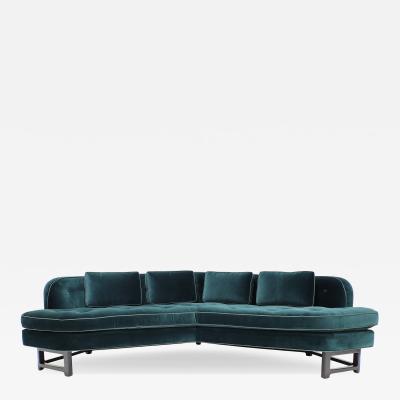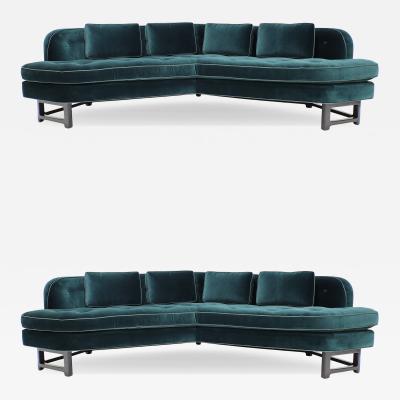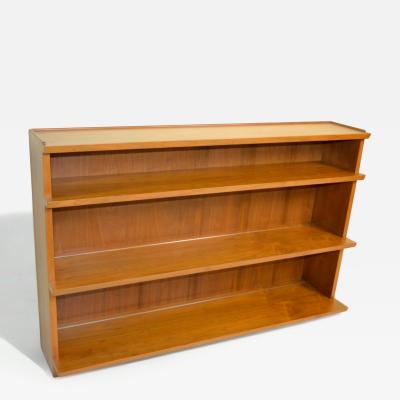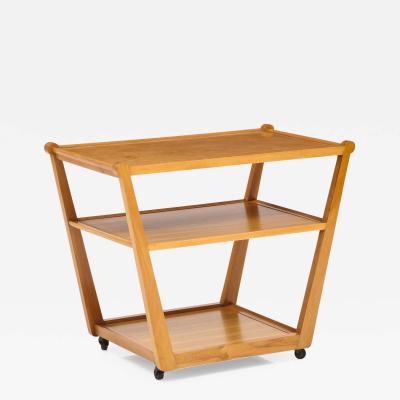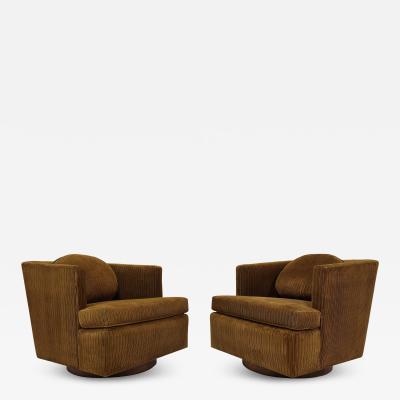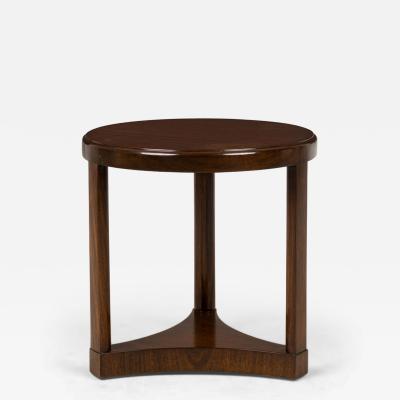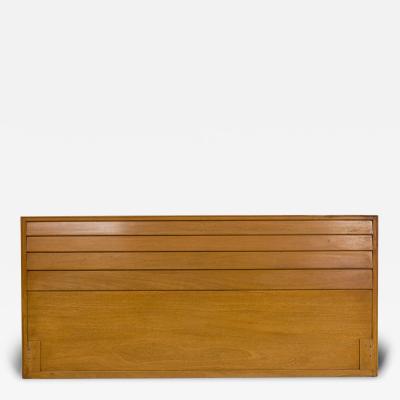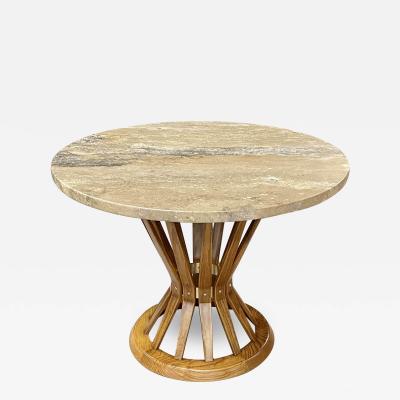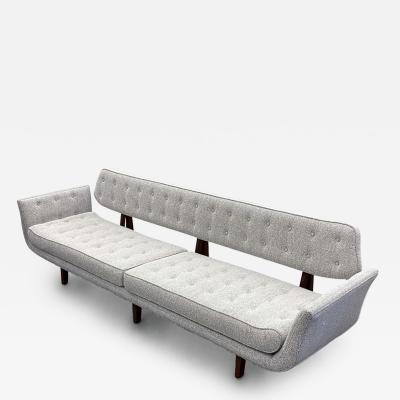Edward Wormley
American, 1907 - 1995
Edward J. Wormley (1907–1995) was a leading American furniture designer whose work helped shape mid-century modern interiors. Born near Chicago, he studied briefly at the School of the Art Institute of Chicago before beginning his career at the interior design studio of Marshall Field & Company. A transformative trip to Paris in 1930 brought him into contact with modernist architect Le Corbusier and Art Deco designer Émile-Jacques Ruhlmann, experiences that greatly influenced his aesthetic.
In 1931, Wormley joined the Dunbar Furniture Corporation in Indiana, eventually becoming its Director of Design and collaborating for over three decades. There, he crafted furniture lines that blended refined materials, elegant surfaces, and clean yet comfortable forms. His designs often referenced historical motifs while translating them into a modern vernacular, making them accessible and stylish without sacrificing craftsmanship.
Wormley’s pieces gained widespread recognition: they were featured in the “Good Design” exhibitions, acquired by major museums, and became staples of high-end interior design. Today, his furniture remains highly sought after by collectors, admired for its timeless sophistication, material quality, and balanced vision between tradition and innovation.
In 1931, Wormley joined the Dunbar Furniture Corporation in Indiana, eventually becoming its Director of Design and collaborating for over three decades. There, he crafted furniture lines that blended refined materials, elegant surfaces, and clean yet comfortable forms. His designs often referenced historical motifs while translating them into a modern vernacular, making them accessible and stylish without sacrificing craftsmanship.
Wormley’s pieces gained widespread recognition: they were featured in the “Good Design” exhibitions, acquired by major museums, and became staples of high-end interior design. Today, his furniture remains highly sought after by collectors, admired for its timeless sophistication, material quality, and balanced vision between tradition and innovation.
Edward Wormley
Edward Wormley, Dunbar, Mahogany, Marble, Large Coffee Table, USA, 1940s
H 13 in DIA 48 in
$ 7,000
Edward Wormley
Mid-Century Modern "Sheaf of Wheat" Table by Edward Wormley for Dunbar
H 20 in W 21 in D 21 in DIA 21 in
$ 2,695
Edward Wormley
Rare Edward Wormley for Dunbar “Magazine Tree” or Side Table in Walnut
H 24 in W 28 in D 16 in
Edward Wormley
Mid-Century Walnut and Rosewood Executive Desk by Edward Wormley for Dunbar
H 29 in W 60 in D 32 in
$ 4,800
Access Trade Price
Edward Wormley
Edward Wormley Faceted Pedestal Cabinet with Slate Top 1963 (Signed)
H 32 in DIA 22 in
$ 8,500
Edward Wormley
Edward Wormley for Dunbar Set of Three Louver Drawer Dressers
H 33 in W 42 in D 19 in
$ 12,000
Edward Wormley
Edward Wormley, Mahogany, Ebonized Wood, Brass, Coffee Table, USA, 1960s
H 15 in W 56 in D 18 in
$ 3,750
Edward Wormley
Dunbar Set of 10 Dining Chairs with Bleached Mahogany Frames & Cocoa Bouclé
H 33 in W 22 in D 23 in
$ 34,400
Edward Wormley
Edward Wormley for Dunbar Horseshoe Dining Chairs (Model 935)
H 31 in W 24 in D 22 in
$ 28,500
Access Trade Price
Edward Wormley
Edward Wormley for Dunbar Janus Sofa in Raf Simons Velvet with Leather Trim
H 31 in W 102 in D 48 in
$ 34,000
Access Trade Price
Edward Wormley
Edward Wormley for Dunbar Janus Sofas in Raf Simons Velvet with Leather Trim
H 31 in W 102 in D 48 in
$ 68,000
Access Trade Price
Edward Wormley
Edward Wormley Sideboard Japanese Elm Dunbar, circa 1953
H 31 in W 72 in D 18 in
$ 8,600
Edward Wormley
Edward Wormley Japanese Elm Book Case Designed for Dunbar, circa 1953
H 31 in W 48 in D 11 in
$ 2,900
Edward Wormley
Rare Edward Wormley for Dunbar Model 251 Swivel Lounge Chairs
H 28 in W 29 in D 31 in
$ 14,000
Access Trade Price
Edward Wormley
Edward Wormley for Dunbar Furniture Company Circular Wood End / Side Table
H 21 in W 21 in D 21 in DIA 21 in
$ 5,800
Edward Wormley
Edward Wormley for Dunbar Furniture Co. King-Size Mahogany Louver Headboard
H 38 in W 84 in D 1 in
$ 7,500
Edward Wormley
Coffee Table Model 5309 by Edward Wormley for Dunbar
H 16 in W 57 in D 31 in
Request Price
Edward Wormley
Large La Gondola Sofa by Edward Wormley for Dunbar
H 32 in W 110 in D 322 in
Request Price
